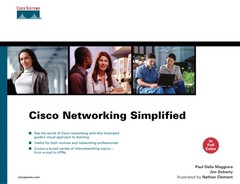
The Internet has opened boundless avenues for new forms of conducting business and trade. Such business and trade does not come without its drawbacks, however. We buy books and cars and other things on the Internet, but concerns remain about the credit-card numbers, personal information, or passwords being stolen from the Internet. In addition, employees want the ability to connect back to the corporate network from anywhere at any time; but there are many instances of commerce sites that have been hacked or bombarded with bogus traffic.
Why does all that happen? Quite simply: Because the Internet is inherently unsecure.
Fortunately, some mechanisms reduce the threat of these problems. Although these methods can be effective, people who want to break security measures are always developing new techniques that break existing protections. You need to be armed with both tools and common sense to help keep your stuff secure.
Home broadband customers and corporations protect their computers and users by installing firewalls between them and the Internet. When conducting commerce and confidential transactions across a public network such as the Internet, the sender and receiver need a way to ensure that each is who she says she is and that no one can eavesdrop on the transactions. Client authentication, encryption, and hashing achieve these goals, and you learn about them and much more in Part III.
